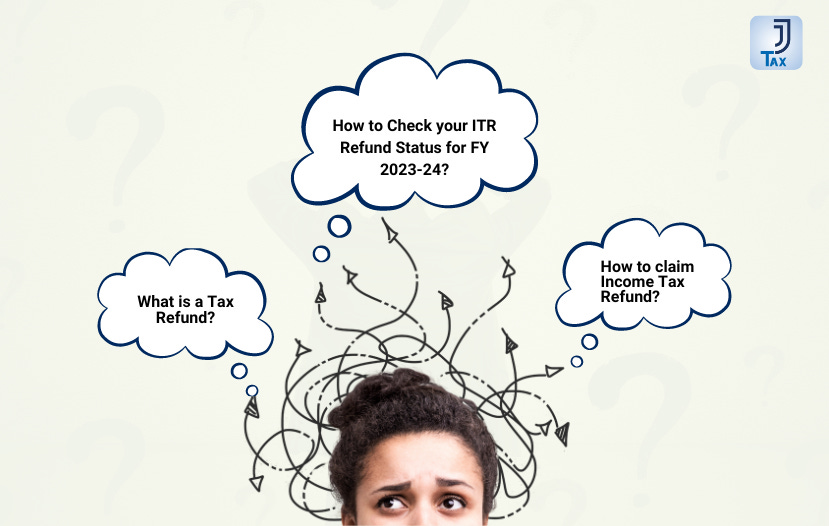A must have guide😇

Tax refunds can feel like a bonus when you get money back from the government for overpaying your taxes. But getting a tax refund can be a bit tricky with all the rules and steps you need to follow.

At its core, a tax refund represents a reimbursement of excess tax paid by an individual or entity to the government. It is a mechanism through which taxpayers reclaim funds that rightfully belong to them, ensuring that they are not unduly burdened by overpayments or erroneous deductions. However, the journey from tax liability to refund receipt is riddled with nuances, regulations, and procedural hurdles that demand attention and expertise.
What is a Tax Refund?
A tax refund is when the government gives you back money because you paid more taxes than you owed. This can happen if:
Too much tax was deducted from your salary (TDS).
You paid more in advance taxes than necessary.
You claimed deductions and exemptions that reduced your tax bill.
To get a refund, you need to follow the rules in the Income Tax Act, 1961. This means filing your income tax return on time, correctly reporting your income and taxes paid, and keeping all necessary documents.
How to Check your ITR Refund Status for FY 2023-24?
You can check your refund status using either two methods:
TIN NSDL website
Income tax e-filing portal
Refund Status check on TIN NSDL Portal
Visit the refund status page.
Enter your PAN, assessment year, and the captcha code.
Click on ‘Submit’.
How to claim Income Tax Refund?
Claiming an income tax refund involves few steps:
Step 1: Gather Documents
Make sure you have all the necessary documents, like your Form 26AS (Tax Credit Statement), TDS certificates, and proof of any investments or tax payments.
Step 2: File Income Tax Return (ITR)
The primary prerequisite for claiming an income tax refund is the filing of an income tax return (ITR) for the relevant assessment year. Taxpayers must ensure timely and accurate filing of their ITR using the appropriate form based on their income sources and tax profile. Electronic filing of ITR through the Income Tax Department's online portal is the preferred method, offering convenience, efficiency, and real-time tracking of refund status.
Step 3: Verify and Submit ITR
After completing the ITR filing process, taxpayers must verify their returns using one of the designated verification methods, such as Aadhaar OTP, EVC (Electronic Verification Code), or physical verification. Once the ITR is successfully verified, it must be submitted to the Income Tax Department for processing.
Step 4: Track Refund Status
Following the submission of the ITR, taxpayers can track the status of their refund claim through the Income Tax Department's online portal. The status can be monitored using the acknowledgment number provided upon successful submission of the ITR. Regular monitoring of the refund status enables taxpayers to stay informed about the progress of their refund claim and take necessary action if required.
Step 5: Receive Refund
Upon successful processing of the refund claim by the Income Tax Department, taxpayers will receive the refund amount through the preferred mode of payment specified in their ITR. Refunds are typically issued through electronic transfer (ECS/NEFT) directly to the taxpayer's bank account. Taxpayers should ensure that their bank account details provided in the ITR are accurate and up-to-date to facilitate seamless receipt of the refund amount.
Step 6: Verify Refund Amount
Upon receipt of the refund amount, taxpayers must verify the correctness of the refund credited to their bank account. It is essential to cross-check the refund amount with the details provided in the ITR and reconcile any discrepancies, if any, with the Income Tax Department.
By following these steps with precision and diligence, taxpayers can navigate the process of claiming an income tax refund in India effectively.
As we conclude our exploration of the tax refund process, let us recognize the significance of tax refunds not just as a financial windfall but as a reflection of our commitment to compliance, transparency, and ethical conduct.
By partnering with JJ Tax, you gain access to comprehensive tax advisory services, tailored to meet your individual needs and goals. Together, we can navigate the complexities of tax refunds with confidence and pave the way for a brighter and more prosperous future.

